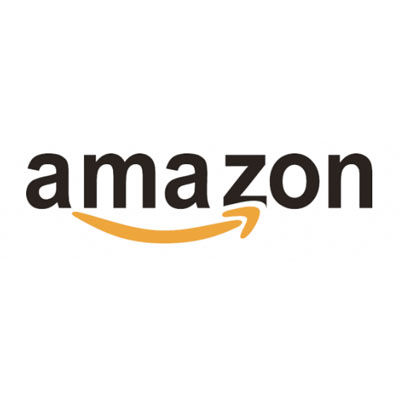
Brand Strategy / Positioning
Electronics & technology – tablets, media players, home appliances; Media & entertainment – publishers, streaming services; Retail – e-retail
Amazon.com Inc.
Electronics & technology – tablets, media players, home appliances; Media & entertainment – publishers, streaming services; Retail – e-retail
Amazon.com Inc.
The most customer-centric company delivering convenience, widest selection and lowest prices.
Innovation, customer focus, excellence, accessibility.
Pioneering, innovative, effective, reliable, down-to-earth, unpretentious.
–
1. “Ramen Programmer” (2025)
2. “Get Into My Cart, Jon Batiste” (2022)
3. “Amazon Super Bowl Commercial 2020” (2020)
4. “Introducing Prime Wardrobe” (2018)
5. Amazon Prime “Dog And Busker” (2017, UK)
6. Amazon Prime TV “A Lonely Little Horse” (2015)
“Amazon is guided by four principles: customer obsession rather than competitor focus, passion for invention, commitment to operational excellence, and long-term thinking. We strive to be Earth’s most customer-centric company, Earth’s best employer, and Earth’s safest place to work.
Amazon’s “Day 1” mentality is our approach to doing everything with the energy and entrepreneurial spirit of a new organization on its first day.”6
The arrow in the Amazon logo, pointing from “A” to “Z”, symbolises that Amazon sells everything – literally from A to Z. It also resembles a smile, adding a sense of warmth and friendliness to the brand’s identity.
1. Amazon’s Leadership Principles
“Leadership Principles”, Amazon,
https://www.amazon.jobs/principles
2. The Drum on how Amazon is using AI to win over major advertisers
R. Draycott, “How Amazon Is Using AI To Solve Advertising’s Most Pressing Problems For Pepsico And Others”, The Drum, May 2025,
https://www.thedrum.com/news/2025/05/07/how-amazon-using-ai-solve-advertising-s-most-pressing-problems-pepsico-and-others/
3. Ad Age on Amazon Prime Day
A. Pasquarelli, “Amazon Prime Day 2022—Everything Brands Need To Know”, Ad Age, Jul 2022,
https://adage.com/article/marketing-news-strategy/amazon-prime-day-2022-everything-brands-need-know/2422331
4. Campaign on Amazon’s ad spend
G. Spanier, “Amazon Is ‘Biggest Advertiser On Earth’ As Adspend Hits $11bn”, Campaign, Feb 2020,
https://www.campaignlive.co.uk/article/amazon-biggest-advertiser-earth-adspend-hits-11bn/1672723
https://www.amazon.com/, https://www.amazon.co.uk/, https://www.facebook.com/Amazon, https://www.facebook.com/AmazonUK, https://www.facebook.com/PrimeVideo/, https://x.com/amazon/, https://x.com/AmazonUK/, https://www.instagram.com/amazon, https://www.pinterest.com/amazon/, http://amazon.tumblr.com/, https://www.linkedin.com/company/amazon, https://www.youtube.com/user/amazon, https://www.youtube.com/user/amazonuk
Amazon was founded by Jeff Bezos in 1994 and launched in 1995 as an online bookstore. The original name considered for the company was Relentless.com (which still redirects to Amazon today), but Bezos eventually opted for a name starting with “A” to appear early in alphabetical listings. After establishing itself in books, Amazon quickly expanded into other product categories such as music, DVDs, and consumer electronics. In the early 2000s, it began entering entirely new industries, most notably with the launch of Amazon Web Services (AWS) in 2006, which marked its move into cloud computing. This was followed by ventures into areas like logistics, entertainment and advertising (Amazon Marketing Services). Over time, Amazon transformed from an e-commerce retailer into a diversified tech conglomerate and became one of the largest companies and most valuable brands in the world.
Amazon is an example of how far a strong brand can stretch, capitalising on the benefits of a brand architecture primarily based on the branded house and sub-brand frameworks. Leveraging the fame of its umbrella brand, the company has built one of the most expansive brand architectures in the world, extending the Amazon name across a wide range of industries: cloud computing (Amazon Web Services), entertainment (Amazon Prime Video), smart home tech (Alexa), groceries (Amazon Fresh) and fashion (Amazon Fashion), to name just a few. Each of these extensions benefits from the trust, scale and visibility of the Amazon brand. Interestingly, they have succeeded even in categories where Amazon initially lacked brand equity and had little to no credibility, such as groceries and fashion.
Amazon’s brand strategy represents an extreme version of a customer-centric approach. It is anchored in three rational benefits: lower prices, wider selection, and convenient services1 (initially defined as “delivery convenience” through the lens of e-commerce). These benefits have been core to Amazon’s brand DNA for years and are treated as long-term strategic constants. Jeff Bezos once remarked: “We have strong conviction that customers value low prices, vast selection, and fast, convenient delivery and that these needs will remain stable over time. It is difficult for us to imagine that ten years from now, customers will want higher prices, less selection, or slower delivery.”2
Since the company began entering new categories (e.g., consumer electronics and streaming services), it has been competing with companies whose brand and communication strategies rely much more heavily on emotional engagement. As a result, Amazon has gradually moved towards a more emotive approach, making its communication warmer and more human.
Amazon sees itself as “a company of pioneers”, “inventing on behalf of customers”. It continuously experiments and enters new sectors – from fashion and groceries to consumer electronics and streaming services. The company acknowledges that not all of its ventures will succeed, but it embraces this risk as part of its long-term strategy. Jeff Bezos, the company’s executive chairman and former president and CEO, explained: “Our passion for pioneering will drive us to explore narrow passages, and, unavoidably, many will turn out to be blind alleys. But – with a bit of good fortune – there will also be a few that open up into broad avenues.”3
Amazon is also well known as an employer brand and has a clearly articulated employer value proposition (EVP). The EVP aligns with Amazon’s broader brand strategy and is built around the company’s 16 leadership principles, which form the foundation of its internal culture (e.g., “Bias for Action,” “Deliver Results,” “Have Backbone; Disagree and Commit”4). Amazon states: “We use our Leadership Principles every day, whether we’re discussing ideas for new projects or deciding on the best way to solve a problem. It’s just one of the things that makes Amazon peculiar.”5
The Amazon brand, with its focus on efficiency, excellence, delivering on promises and getting things done quickly, is a clear example of a Hero brand. While the name might imply elements of the Explorer archetype, these are largely absent from the brand’s communication – aside from the association with the world’s largest river.